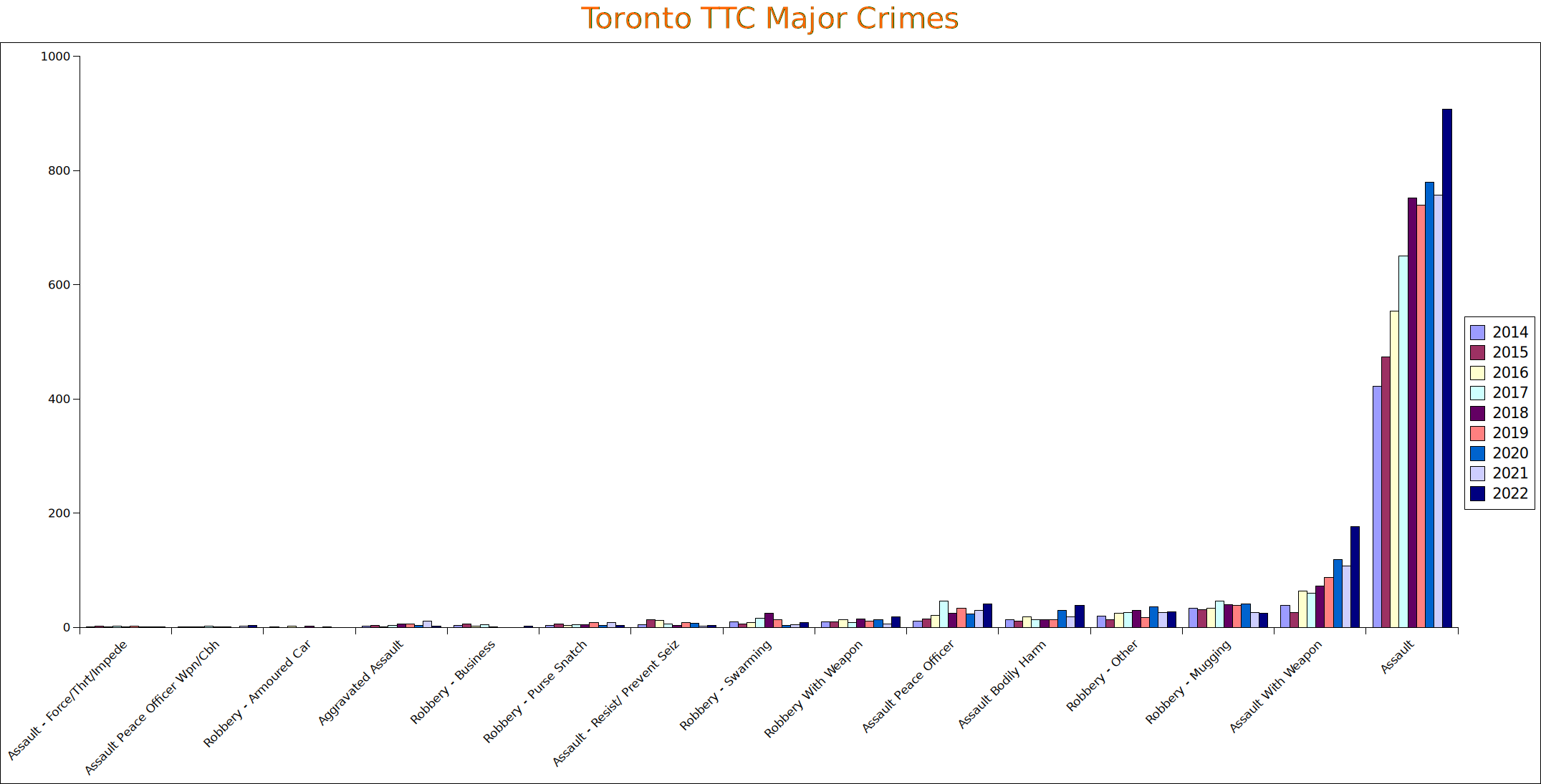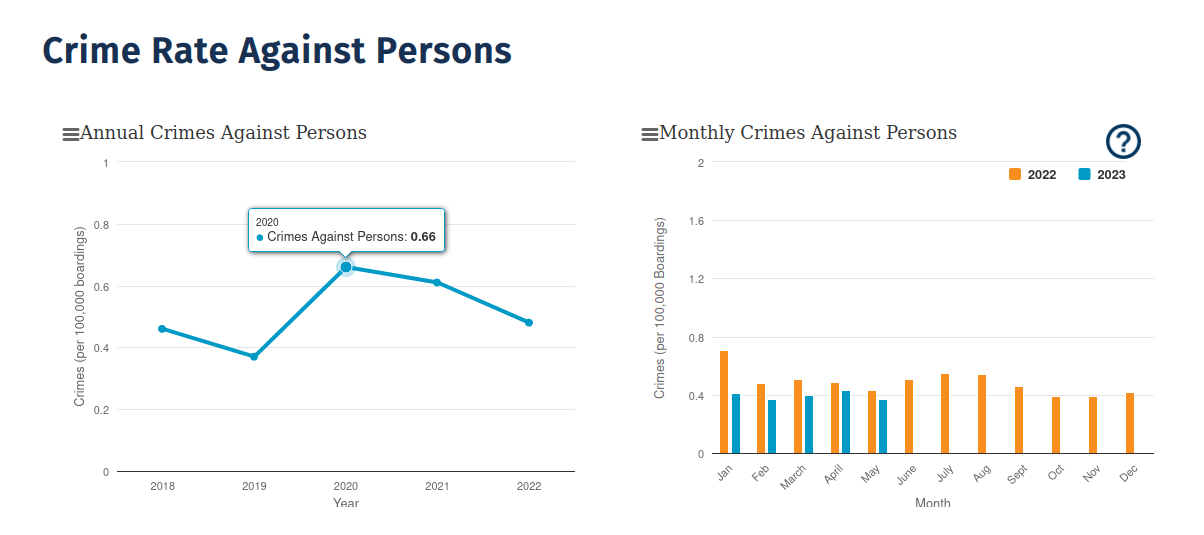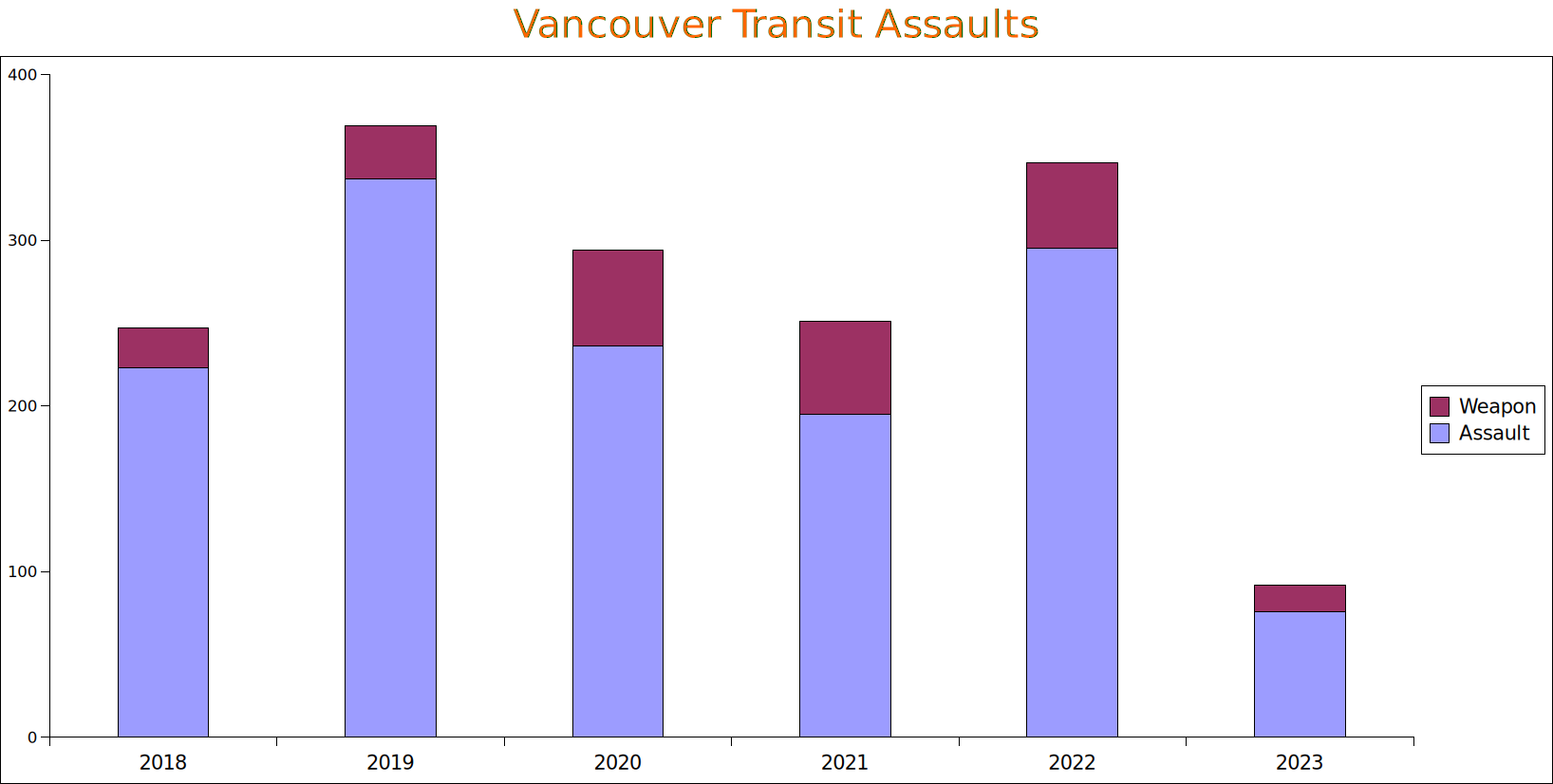July 21, 2023
Safety on public transit
Global mental health crisis on transit
Committees examining USA and European violence on transit have identified lack of response of mental health and housing supports as the main reason for increased safety concerns on transit.
The USA mayors identified mental health as the primary concerns for municipalities. Secondary concerns are lack of housing and safe injection sites. Transit systems become the safe injection sites and safer shelter options for unhoused.
Reduced ridership saw the incidents of per-rider crimes increase across most transit systems in the world. The absolute number of incidents has also increased over the period from early 2000s, but again mostly attributed to mental health and housing.
The crisis that became very clear during the pandemic was already a slow moving crisis since 2012.
Violence on Transit
In Toronto, data shows assaults on transit have jumped and are the main crime on transit systems. All other forms of violence have not changed significantly.
The increase in assaults have occurred almost exclusively in subway stations with some knock-on effect of increasing the number of incidents on subway trains.
The increase started well before the pandemic.


In Vancouver, major incidents have not seen the same increase, but there was a slight uptick in crimes against persons (mostly assaults) in 2020/2021 when compared to previous to the pandemic. These stats are a function of ridership, so it may be that a reduction in total ridership caused the increase in proportion of incidents.


CUTA
The Canadian Urban Transit Association has responded to the uptick in incidents being reported by pushing a change to the criminal code. The goal is to expand the strengthened penalties beyond operators (drivers) to all transit workers.
It is very unclear at this point whether increased penalties deters acts of assault and violence against workers in transit systems. If acts of violence are in response to the current mental health, drug, and housing crisis then it is unlikely to impact these stats much.
CUTA government recommendations:
The recommendations also call on the Government of Canada to strengthen penalties for assault on all transit workers by amending subsection 269.01 of the criminal code to include all transit workers, not just transit operators.
Bill 151, Zero Tolerance to Violence on Public Transit Act, 2009
Specifically, the penalties for already major crimes on transit systems:
Offence and penalty
(4) A person who contravenes subsection (1), (2) or (3) is guilty of an offence and on conviction,
(a) is liable to a fine of not more than $50,000 or to imprisonment for a term of two years less a day, or to both; and
(b) is prohibited from entering any property that is part of a public transit system or that is used in connection with the operation of a public transit system.
Personal note on transit violence
The response outlined by European and USA mayors (along with some responses here in Canada) point to the perceived (and real) increase in violence is to address homelessness, drug issues (mostly Canada and the USA), and the mental health crisis. All of which are not new to the pandemic.
For all the recent high-profile occurrences of violence on our transit systems, it has been a slowly growing problem starting at least a decade ago.
The stats show (including other reports around the world) that transit stations have had an increase in the number and density of unhoused individuals in some type of mental health crisis (or drug use). The result has been an increase in incidents related to this.
According to the American Psychological Association, it is not that those who use drugs and/or are in mental health crisis are more violent. It is that more violent individuals with substance abuse and mental health issues are seeking shelter in our transit systems. This is a function of total numbers as opposed to an increase in general violence.
The point here is not to minimize this issue of violence experienced by workers and commuters, but it is clear to me that the response has to be more than just pathways to homes, but also social supports for all issues at the same time.
Over the previous decade, there have been an increase in assaults due to the increased use of transit hubs by folks in crisis. This increases the number of interactions between commuters/workers and the increased number of folks in crisis.
The solution offered by those who study this is to reverse the cuts to social supports (real cuts and not increasing supports in line with population growth), increase the number and total funding to front-line social service workers, and increase access to housing.
The short-term solutions are going to be related to attempting to reduce interactions between those in crisis and commuters/workers. But, none of these will likely reduce the incidents of violent offenses since most of these measures just shift people around. For example, a violent individual in crisis finding shelter in a transit system will eventually precipitate a violent encounter.